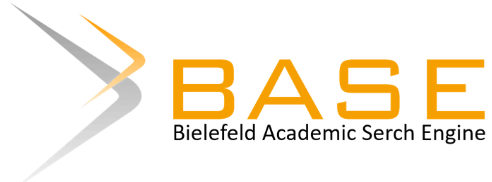Abstract
Storytelling can be a tool to create persuasive communication and provide personal engagement among its public. Storytelling strategy also can be applied in various digital communication channels, which is a flexible strategy to be implemented even in a niche digital business sector. Based on a rapid digital business competition, this study aims to discuss the use of storytelling strategy by Public Relations at DQLab.id, one of an active online Data Science Education Technology (Edtech) industry in Indonesia, as a tool to develop corporate reputation. The method used in this study is qualitative descriptive by providing depth interview, observation, supporting data, and literature study from various sources. The finding of this study shows that Public Relations practitioners at DQLab.id use Customer-Led Storytelling strategy combined with the use of keyword strategy on SEO to develop trust and leverage specific target markets. The result of this study also shows that the storytelling strategy used in DQLab.id has providing a different perspective of a story that increases the credibility of a message. Storytelling is a Public Relation’s tool that has significant leverage to help marketing activities by targeting the right customer segmentation, developing trust in a corporate brand, and deliver it into a positive reputation for DQLab.
Bahasa Abstract
Cerita dapat menjadi alat untuk menciptakan komunikasi persuasif dan memberikan keterlibatan pribadi di antara publiknya. Strategi bercerita juga dapat diterapkan dalam berbagai saluran komunikasi digital, yang merupakan strategi fleksibel yang dapat diimplementasikan bahkan dalam sektor bisnis digital niche. Berdasarkan persaingan bisnis digital yang cepat, studi ini bertujuan untuk membahas penggunaan strategi bercerita oleh Public Relations di DQLab.id, salah satu perusahaan Teknologi Pendidikan Data Science online (Edtech) yang aktif di Indonesia, sebagai alat untuk mengembangkan reputasi perusahaan. Metode yang digunakan dalam studi ini adalah deskriptif kualitatif dengan memberikan wawancara mendalam, observasi, data pendukung, dan studi literatur dari berbagai sumber. Temuan dari studi ini menunjukkan bahwa praktisi Public Relations di DQLab.id menggunakan strategi Customer-Led Storytelling yang dikombinasikan dengan penggunaan strategi kata kunci pada SEO untuk mengembangkan kepercayaan dan memanfaatkan pasar target tertentu. Hasil dari studi ini juga menunjukkan bahwa strategi bercerita yang digunakan di DQLab.id memberikan perspektif yang berbeda dari sebuah cerita yang meningkatkan kredibilitas pesan. Bercerita adalah alat Public Relations yang memiliki pengaruh signifikan untuk membantu kegiatan pemasaran dengan menargetkan segmentasi pelanggan yang tepat, mengembangkan kepercayaan terhadap merek perusahaan, dan menghasilkannya menjadi reputasi positif untuk DQLab.
References
Agustina, T. S. (2020). Storytelling Sebagai Bisnis Sosial Start-Up Ojek Syar'i Berbasis Aplikasi di Surabaya. INOBIS, 450.
Andree, K. S. (2011). The Dentsu Way: Secrets of Crosswitch Marketing from the World's Most Innovative Advertising Agency. New York: McGraw Hill.
Argenti, P. A. (2016). Corporate Communication Seventh Edition. New York: Mc Graw Hill Education.
Cees B.M. Van Riel, C. J. (2007). Essentials of Cirporate Communications. New York: Routledge.
Dacin, T. j. (1997). The Company and The Product: Corporate Associations and Consumer Product Responses. Sage Publications.Inc, 61, 68-84.
David Weiss, J. M. (2015). Influencing Healthcare Policy: Implications of State Legislator Information Source Preferences for Public Relations Practitioners and Public Information Officers. Online Journal of Communication and Media Technologies.
Dr Robert L Heath, E. L. (2013). Book Rhetorical and Critical Approaches to Public Relations II. New York: Roytledge.
DQLab. (2023, october 8). DQLab website. Retrieved from DQLab.id: https://dqlab.id/
DQLab. (2023, October 10). DQLab website. Retrieved from DQLab.id: https://dqlab.id/
DQLab. (2023, October 17). DQLab. Retrieved from DQLab.id: https://dqlab.id/
Factory, Innovation and Ravenry. (2020). the ravenry. Retrieved october 2023, from theravenry.com: https://theravenry.com/wp-content/uploads/2020/08/i360-Report-Edutech-Industry-in-Indonesia.pdf
George, T. (2023, October 19). Exploratory research. Retrieved from Scribbr: https://www.scribbr.co.uk/research-methods/exploratory-research-design/
Gioglio, E. W. (2018). The Laws of Brand Storytelling: Win and Keep Your Customer's Hearts and Minds. New York: Mc Graw Hill.
Kaufman, B. (2003). Stories that Sell, Stories that Tell. Journal of Business Strategy.
Kaufman, B. (2003). Stories that Sell, Stories that Tell. Journal of Business Strategy.
Keller, P. K. (2016). Marketing Management (15th ed.). New Jersey: Pearson Education Limited.
Klaus Fog, C. B. (2010). Storytelling: Branding in Practice. New York: Springer.
Lush - The Content Agency. (2023). How to Structure a Better Brand Story. Retrieved from Lush: https://lushthecontentagency.com/blog/lushdigital-combrand-story-structure/
McCombs, C. E. (2003). Agenda-setting Effects of Business News on the Public's Images and Opinions about Major Corporations. The University of Texas at Austin,, 36-46.
Mossberg, L. (2006). Storytelling: Marknadsföring i upplevelseindustrin. Studentlitteratur.
Oluwatusin Akinrinde, A. O. (2022). The Role of Public Relations in Improving Brand Reputation Through Storytelling. MSc Marketing and User Experience Bournemouth University.
Roberts, J. (2016). Writing for Strategic Communication Industries. Ohio: Ohio State University.
Shyhnan, L. W. (2016). How Social Enterprise Attract Public Awareness Using Storytelling. International Academic Conferences 3505862. International Institute of Social and Economic Sciences: Jurnal Economia.
Smith, R. D. (2013). Strategic Planning for Public Relations 6th Edition. New York: Routledge.
Recommended Citation
Yunandika, Nike Putri and Bangun, Cendera Rizky Anugrah
(2024)
"The Role of Public Relations in Digital Era: Storytelling Strategy to Develop Corporate Reputation,"
Jurnal Vokasi Indonesia: Vol. 11:
No.
2, Article 7.
DOI: 10.7454/jvi.v11i2.1204
Available at:
https://scholarhub.ui.ac.id/jvi/vol11/iss2/7








